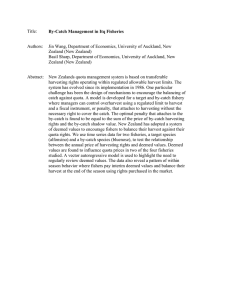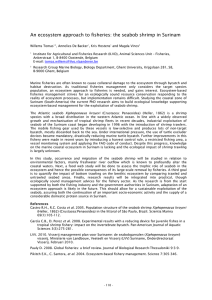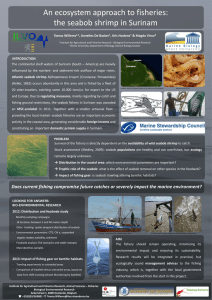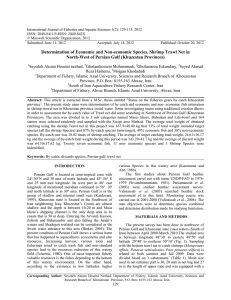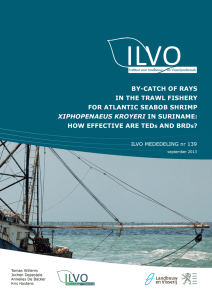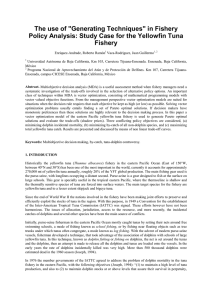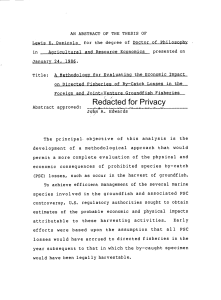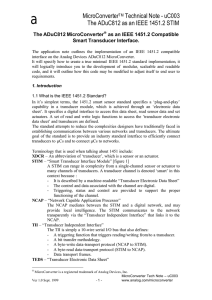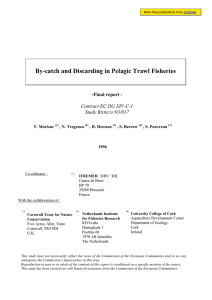By-catch in a tropical shrimp fishery: how effective are TEDs... BRDs in excluding elasmobranchs?
advertisement
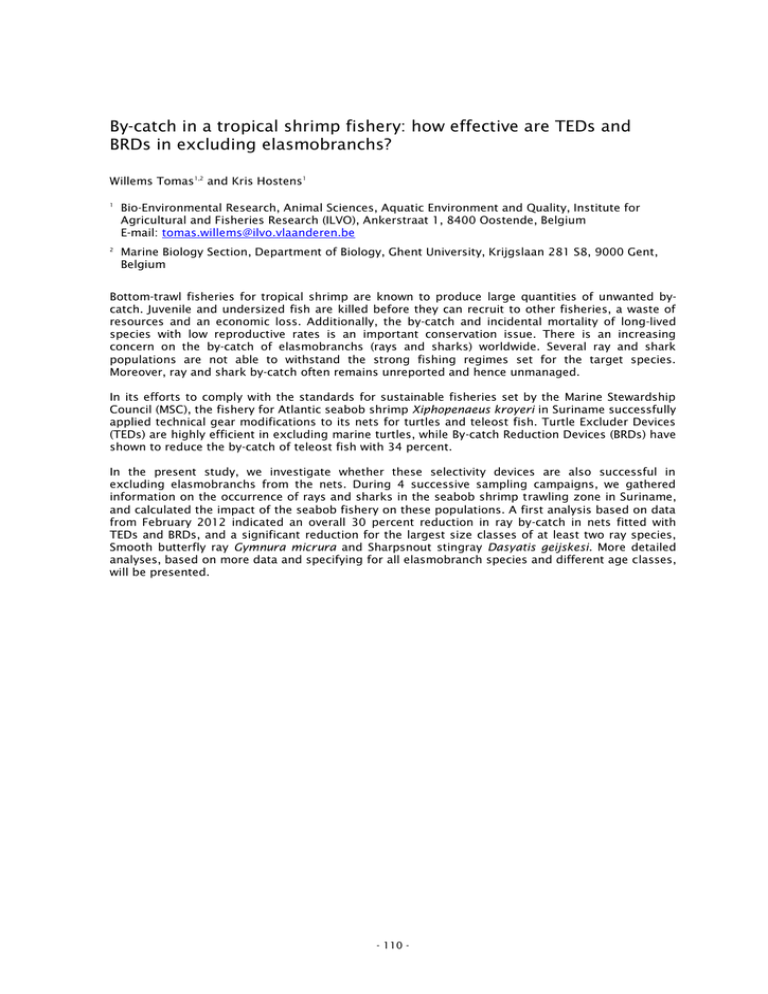
By-catch in a tropical shrimp fishery: how effective are TEDs and BRDs in excluding elasmobranchs? Willems Tomas1,2 and Kris Hostens1 1 Bio-Environmental Research, Animal Sciences, Aquatic Environment and Quality, Institute for Agricultural and Fisheries Research (ILVO), Ankerstraat 1, 8400 Oostende, Belgium E-mail: tomas.willems@ilvo.vlaanderen.be 2 Marine Biology Section, Department of Biology, Ghent University, Krijgslaan 281 S8, 9000 Gent, Belgium Bottom-trawl fisheries for tropical shrimp are known to produce large quantities of unwanted bycatch. Juvenile and undersized fish are killed before they can recruit to other fisheries, a waste of resources and an economic loss. Additionally, the by-catch and incidental mortality of long-lived species with low reproductive rates is an important conservation issue. There is an increasing concern on the by-catch of elasmobranchs (rays and sharks) worldwide. Several ray and shark populations are not able to withstand the strong fishing regimes set for the target species. Moreover, ray and shark by-catch often remains unreported and hence unmanaged. In its efforts to comply with the standards for sustainable fisheries set by the Marine Stewardship Council (MSC), the fishery for Atlantic seabob shrimp Xiphopenaeus kroyeri in Suriname successfully applied technical gear modifications to its nets for turtles and teleost fish. Turtle Excluder Devices (TEDs) are highly efficient in excluding marine turtles, while By-catch Reduction Devices (BRDs) have shown to reduce the by-catch of teleost fish with 34 percent. In the present study, we investigate whether these selectivity devices are also successful in excluding elasmobranchs from the nets. During 4 successive sampling campaigns, we gathered information on the occurrence of rays and sharks in the seabob shrimp trawling zone in Suriname, and calculated the impact of the seabob fishery on these populations. A first analysis based on data from February 2012 indicated an overall 30 percent reduction in ray by-catch in nets fitted with TEDs and BRDs, and a significant reduction for the largest size classes of at least two ray species, Smooth butterfly ray Gymnura micrura and Sharpsnout stingray Dasyatis geijskesi. More detailed analyses, based on more data and specifying for all elasmobranch species and different age classes, will be presented. - 110 -
